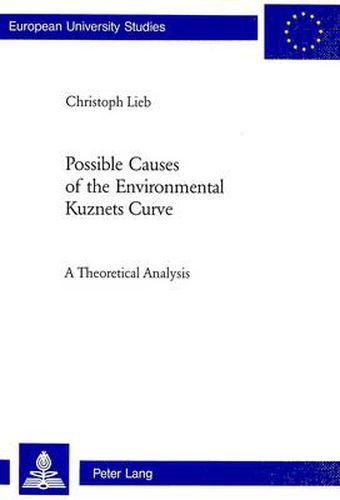Readings Newsletter
Become a Readings Member to make your shopping experience even easier.
Sign in or sign up for free!
You’re not far away from qualifying for FREE standard shipping within Australia
You’ve qualified for FREE standard shipping within Australia
The cart is loading…






The environmental Kuznets curve (EKC) is a hypothesis stating that pollution rises with income at low levels of income but falls at higher income levels. If this hypothesis were true, economic growth would finally be good for the environment. But is this hypothesis correct? For which pollutants does the EKC exist and for which pollutants is the pollution-income relationship monotonically rising? Why does the EKC hypothesis apply to some, but not to other pollutants?
The author first surveys the empirical and theoretical literature. He also analyses which theoretical causes of the EKC are empirically validated. After introducing a method for solving static models with milder assumptions about the ordinal, instead of the cardinal utility function, the author offers further explanations of the EKC. In one static and in two dynamic models he analyses the (intertemporal) choice between consumption and abatement. He also explores an overlapping generations model with two pollutants. From this analysis conclusions about the pollution-income relationship for different types of pollutants are drawn. These conclusions are especially important for policy-makers.
$9.00 standard shipping within Australia
FREE standard shipping within Australia for orders over $100.00
Express & International shipping calculated at checkout
The environmental Kuznets curve (EKC) is a hypothesis stating that pollution rises with income at low levels of income but falls at higher income levels. If this hypothesis were true, economic growth would finally be good for the environment. But is this hypothesis correct? For which pollutants does the EKC exist and for which pollutants is the pollution-income relationship monotonically rising? Why does the EKC hypothesis apply to some, but not to other pollutants?
The author first surveys the empirical and theoretical literature. He also analyses which theoretical causes of the EKC are empirically validated. After introducing a method for solving static models with milder assumptions about the ordinal, instead of the cardinal utility function, the author offers further explanations of the EKC. In one static and in two dynamic models he analyses the (intertemporal) choice between consumption and abatement. He also explores an overlapping generations model with two pollutants. From this analysis conclusions about the pollution-income relationship for different types of pollutants are drawn. These conclusions are especially important for policy-makers.